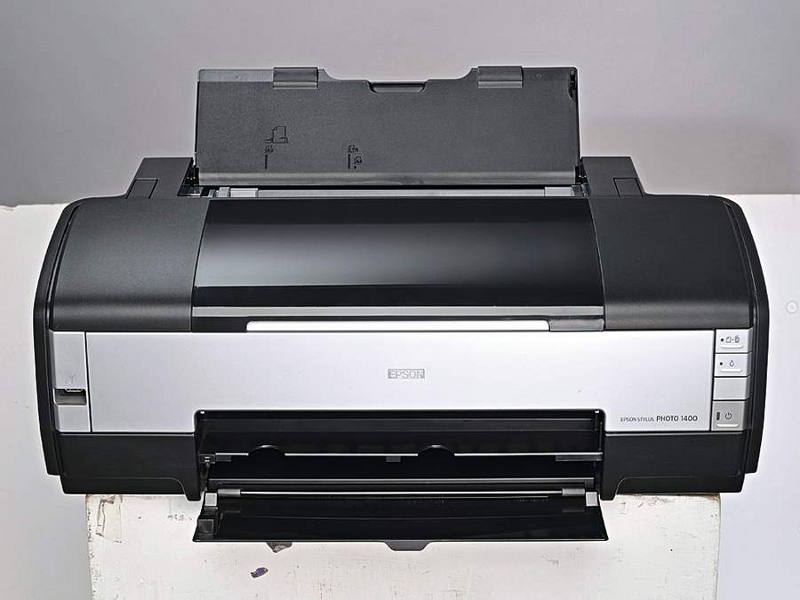TechRadar Verdict
A little basic, but still worthwhile for A3+ colour printing on a tight budget.
Pros
- +
Produces vibrant colour prints on glossy paper
- +
It's cheap
Cons
- -
Limited colour space
Why you can trust TechRadar
The Stylus Photo 1400 uses the same Owl cartridges that act as high-yield options for some of Epson's A4 photo printers. However, with a relatively low capacity of 11.1ml per cartridge, they need replacing more often than most when fitted in an A3+ printer.
The variety of colours is limited, with a traditional range of CMYK inks boosted by additional light cyan and light magenta. This means that you're lacking the extra red and green cartridges found in the Canon A3+ printers for an extended gamut.
Onboard printer controls are limited, too, although the printer driver has a good range of features, including customisable controls for fine-tuning print brightness, contrast, saturation and colour balance.
Like the other dye-based printer tested, the Canon Pro9000 Mark II, the 1400 makes vibrant colour prints on glossy paper. In fact, prints can be a little too high in contrast with the Photo Enhance feature enabled or when using the printer's vivid colour mode, whereas some images in the standard colour mode can look a little muted.
Overall, it can be tricky to achieve the right balance and, to make matters worse, our review sample produced particularly dull results when handing over the control of colour management to Photoshop.
TEST PRINTS
In maximum quality mode, the Epson 1400 is slow for a dye-based printer, taking 11m 16s to produce a borderless A3+ print, compared with the Pro9000's 4m 25s. That's akin to the print speeds of pigment-based printers, but unlike the Pro9000, it doesn't slow down in greyscale-printing mode. However, our black-and-white test images were too dark in greyscale, and we found it better to use regular colour mode, especially as colour casts were quite minimal.
Sign up for breaking news, reviews, opinion, top tech deals, and more.
Follow TechRadar Reviews on Twitter: http://twitter.com/techradarreview
